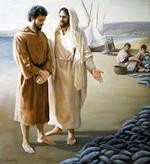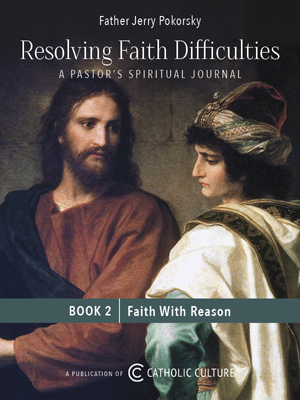Catechism of the Catholic Church
Share this paragraph of the Catechism:
Paragraph:
470 Because "human nature was assumed, not absorbed", 97 in the mysterious union of the Incarnation, the Church was led over the course of centuries to confess the full reality of Christ's human soul, with its operations of intellect and will, and of his human body. In parallel fashion, she had to recall on each occasion that Christ's human nature belongs, as his own, to the divine person of the Son of God, who assumed it. Everything that Christ is and does in this nature derives from "one of the Trinity". The Son of God therefore communicates to his humanity his own personal mode of existence in the Trinity. In his soul as in his body, Christ thus expresses humanly the divine ways of the Trinity: 98
The Son of God. . . worked with human hands; he thought with a human mind. He acted with a human will, and with a human heart he loved. Born of the Virgin Mary, he has truly been made one of us, like to us in all things except sin. 99
Move forward or back a paragraph: Previous | Next
Where this paragraph appears in the Catechism:
TABLE OF CONTENTS
» |
PART ONE: THE PROFESSION OF FAITH |
» |
SECTION TWO: THE PROFESSION OF THE CHRISTIAN FAITH |
» |
CHAPTER TWO: I BELIEVE IN JESUS CHRIST, THE ONLY SON OF GOD |
» |
ARTICLE 3: "HE WAS CONCEIVED BY THE POWER OF THE HOLY SPIRIT, AND WAS BORN OF THE VIRGIN MARY" |
» |
Paragraph 1. The Son of God Became Man |
Notes for the above paragraph:
97 GS 22 § 2.98 Cf. Jn 14:9-10.
99 GS 22 § 2.
English Translation of the Cathechism of the Catholic Church for the United States of America © 1997, United States Catholic Conference, Inc.






